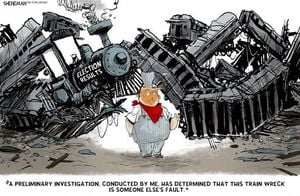The NBA has never been short on drama, both on and off the court. As the 2025-26 season looms, stories from the league’s past and present are colliding in ways that remind fans just how much the game—and those who bring it to life—have changed over the decades. From the cautionary tale of Spencer Haywood’s battle with addiction to the evolving career of broadcasting mainstay Ian Eagle, the NBA’s narrative continues to be shaped by personalities whose journeys reflect the league’s triumphs, struggles, and ongoing transformation.
Spencer Haywood’s story is one of both groundbreaking achievement and personal tragedy. According to Basketball Network, Haywood first encountered cocaine during his time with the New York Knicks in the late 1970s, a period when drug use was a widespread issue in the NBA. By the time he joined the Los Angeles Lakers for the 1979-80 season, Haywood’s addiction had taken hold—and it would ultimately derail his career at its apex.
“One day I was on my way to practice,” Haywood recounted during a recent appearance on the "All the Smoke" podcast. “I had a real crazy night. We were in the playoffs for the Finals. I had, I got to have one more shot. I got to have one more hit, so I stayed up, just kept going. I was piping. So I'm driving along, I get up to the thing and all of a sudden I fall asleep, and I'm hearing cars banging, people banging my door. I'm like, 'What the hell are y'all doing hitting my Rolls Royce like this?'”
The consequences were immediate and severe. With Game 1 of the 1980 NBA Finals scheduled for May 4, Lakers head coach Paul Westhead had scheduled intense practices in the days leading up to the series. Haywood, who had promised to stay clean for the Finals, participated fully in a Thursday practice. Yet, as detailed in Jeff Pearlman's "Showtime" and reported by Basketball Network, he relapsed that night, using cocaine until 3 a.m. and taking Quaaludes in a desperate attempt to come down. The next day, exhausted and impaired, Haywood fell asleep during a team session. Westhead, fearing Haywood could become a distraction, dismissed him from the team. Haywood never played a minute in the 1980 Finals—a series the Lakers would go on to win without him.
Haywood’s fall from grace didn’t stop there. He later revealed, “From that, Iman was like, 'Well, I know what you can do, because they told me, you need to get out of wet places and wet faces.' I said, 'I'll go back to New York with the Knicks, I'll go back to Utah. I can be clean in Utah. And everybody put the word out, and David Stern has said, 'Man, I need you to take the fall for the league,' so I went to Italy.”
Following his exile from the NBA, Haywood played a season in Italy with Carrera Reyer Venezia, performing well enough to earn a return to the NBA with the Washington Bullets. Over two seasons, he averaged 11.6 points and 5.3 rebounds per game in 114 appearances. But tragedy struck again in 1983 when his wife, supermodel Iman, was seriously injured in a car accident. Haywood retired at age 33 to care for her and her family, never returning to the NBA.
Despite the heartbreak, Haywood’s legacy endures. He is remembered for his pivotal role in changing NBA eligibility rules, allowing underclassmen and high school players to enter the league—a move that paved the way for countless stars who followed. Still, the shadow of what might have been lingers. As Basketball Network put it, “He was on a trajectory to become one of the all-time greats when cocaine destroyed his NBA career.”
While Haywood’s story serves as a sobering reminder of the league’s turbulent past, Ian Eagle’s career offers a glimpse into the NBA’s modern era, where media coverage and broadcasting have become nearly as important as the games themselves. According to Sports Media Watch, Eagle will be scaling back his long-standing role as the voice of the Brooklyn Nets this season, calling just 10 to 15 games—down from about 40 in recent years. The reason? A “sizable” new commitment as the lead NBA voice for Amazon Prime Video.
“This year, it’s really a sliding scale, depending upon availability and then how often they need me,” Eagle said on the Sports Media Watch Podcast. He expects to call around 50 games for Amazon Prime Video, spanning the regular season, NBA Cup, NBA Play-in Tournament, and NBA Playoffs. Notably, Eagle is slated to call conference final games on television for the first time in his career starting in 2027, as Amazon Prime Video will have a conference final every other year beginning that season.
Eagle’s broadcasting journey is a testament to both longevity and adaptability. He’s called Nets games on television since 1995—after a year on radio—and has witnessed the team’s moves and rebrandings firsthand. There was a time when his Nets commitments reached as high as 82 games, especially when the team was rarely featured on national broadcasts. Over the years, that number dropped to 70, then 60, 52, and eventually 40. Now, with Eagle holding a #1 position on a national NBA game package for the first time, the shift marks a new chapter in his storied career.
Importantly, Eagle will continue his role as the lead voice for CBS/TNT Sports’ NCAA men’s basketball tournament coverage, maintaining his presence in college basketball even as his NBA responsibilities evolve. The move to Amazon Prime Video is not just a professional milestone for Eagle but also a reflection of the changing media landscape, where streaming platforms are increasingly central to how fans experience the game.
On the podcast, Eagle touched on a range of topics beyond his schedule. He reminisced about his early days producing Mike Tirico’s radio show in college, discussed his partnership with CBS NFL analyst J.J. Watt, and shared his excitement about working alongside his son, Noah Eagle, who is quickly making a name for himself in sports broadcasting.
Both Haywood’s and Eagle’s stories underscore the NBA’s evolution—from a league grappling with internal crises to one that now commands a global audience through cutting-edge media platforms. Haywood’s journey is a cautionary tale, a reminder of how personal demons can derail even the most promising careers. Eagle’s ascent, meanwhile, highlights the opportunities that come with the NBA’s ever-expanding reach and the importance of adaptability in an industry where change is the only constant.
As the league looks ahead, these intertwined narratives offer a window into basketball’s enduring power to inspire, caution, and connect. The stories of those who have shaped the NBA—on the court and behind the microphone—continue to resonate, reminding fans that the game is about more than just wins and losses.




